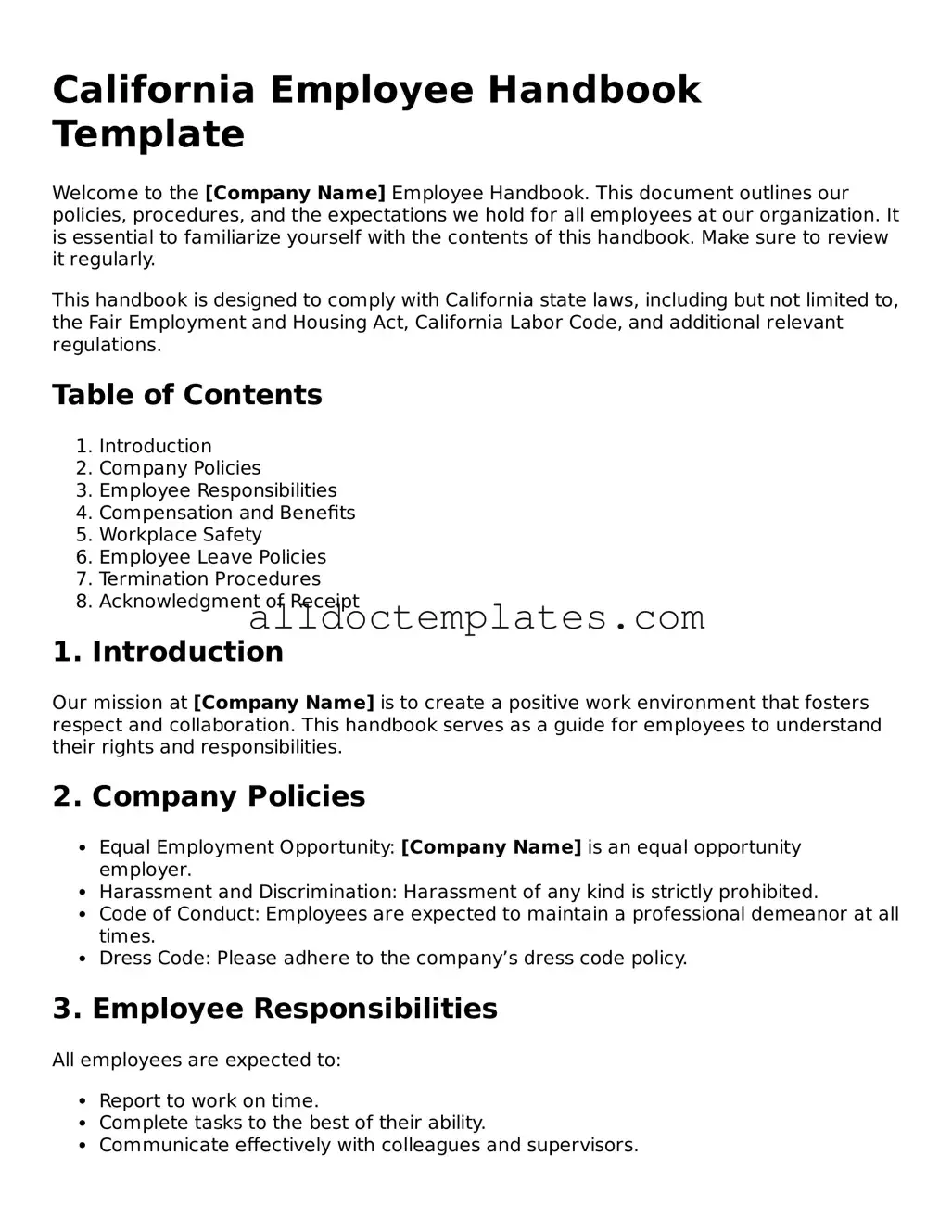California Employee Handbook Template
Welcome to the [Company Name] Employee Handbook. This document outlines our policies, procedures, and the expectations we hold for all employees at our organization. It is essential to familiarize yourself with the contents of this handbook. Make sure to review it regularly.
This handbook is designed to comply with California state laws, including but not limited to, the Fair Employment and Housing Act, California Labor Code, and additional relevant regulations.
Table of Contents
- Introduction
- Company Policies
- Employee Responsibilities
- Compensation and Benefits
- Workplace Safety
- Employee Leave Policies
- Termination Procedures
- Acknowledgment of Receipt
1. Introduction
Our mission at [Company Name] is to create a positive work environment that fosters respect and collaboration. This handbook serves as a guide for employees to understand their rights and responsibilities.
2. Company Policies
- Equal Employment Opportunity: [Company Name] is an equal opportunity employer.
- Harassment and Discrimination: Harassment of any kind is strictly prohibited.
- Code of Conduct: Employees are expected to maintain a professional demeanor at all times.
- Dress Code: Please adhere to the company’s dress code policy.
3. Employee Responsibilities
All employees are expected to:
- Report to work on time.
- Complete tasks to the best of their ability.
- Communicate effectively with colleagues and supervisors.
4. Compensation and Benefits
[Company Name] values its employees and offers competitive salaries and benefits, including:
- Health insurance options.
- Retirement plans.
- Paid time off.
5. Workplace Safety
Safety is a priority. Employees must:
- Follow all safety protocols.
- Report any hazards or incidents immediately.
6. Employee Leave Policies
Employees may be eligible for various types of leave, including:
- Sick leave.
- Family and medical leave.
- Vacation time.
7. Termination Procedures
Termination can occur for various reasons, including:
- Voluntary resignations.
- Involuntary terminations for just cause.
8. Acknowledgment of Receipt
Please complete the acknowledgment form below and submit it to Human Resources:
By signing below, you acknowledge receipt of this employee handbook and agree to adhere to its policies:
Employee Name: _______________________________
Date: ______________________________________
Thank you for being part of the [Company Name] team!
